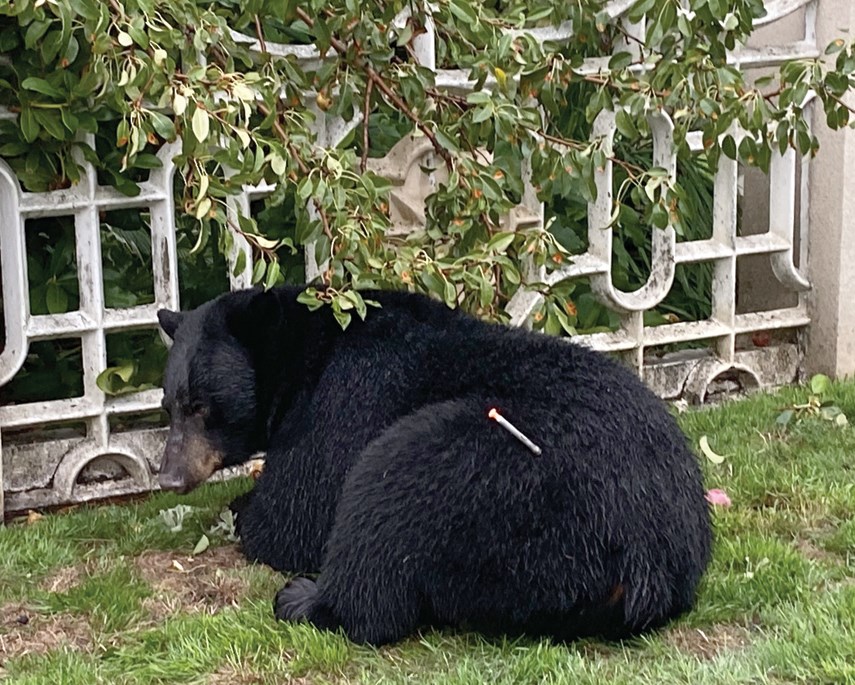The North Shore may be in for a quieter year of bear activity, according to the North Shore Black Bear Society, albeit for unfortunate reasons.
“We lost nine bears last year on the North Shore – seven killed for finding food around homes and two killed by vehicles, so that's going to obviously affect a local population,” said Luci Cadman, executive director for the society. “But we're starting to see some familiar faces back in the community, back into neighbourhoods where they spent quite a bit of time last year.”
Male bears are the first to emerge from their dens around mid-February. Sows and their cubs will likely start showing up in later April and May, Cadman said. They are more likely to live on the periphery of urban neighbourhoods because mothers try to keep their cubs a safe distance from threatening males.
Every year, the Black Bear Society works with bylaw officers to educate residents on how to peacefully coexist with bears, mainly by keeping properties free of garbage, fruit trees, bird feeders and other attractants that lure bears in and ultimately wind up in calls to the BC Conservation Officer Service.
“Sadly, not a good start. They're already finding garbage around homes,” Cadman said.
Caulfeild in West Vancouver and Lynn Valley in North Vancouver have been the hot spots so far this year.
Since the start of 2022, District of West Vancouver bylaw officers have handed out three $300 bylaw notices for failing to properly enclose wildlife attractants, but zero for people having their garbage bins out before 5 a.m.
By contrast, District of North Vancouver bylaw staff have handed out more than 500 fines at $100 apiece for property owners violating the bylaw so far this year.
“That really shows the community that the lives of these animals have value, and we're very grateful for the [District of North Vancouver] for the work that they do,” she said.
Cadman said she would “absolutely support” District of West Vancouver council moving to a zero-tolerance policy, as the DNV did in 2020.
“The education has been out there for years,” she said. “So we really want the enforcement piece to back up our education now.”
Cadman said the overriding message for what to do when you do encounter a bear is to give them their space.
“What we saw way too much of last year was people within five feet of a bear, holding small children to get photographs,” she said. “That puts a lot of pressure and stress on these animals.”
When a bear appears to be getting a little too comfortable in a resident’s yard, it’s best to calmly but assertively, from a safe distance, tell them it’s time to move on. Black bears are not naturally aggressive, though people often misinterpret their behaviour that way.
“Remember that bears are in close proximity to people daily on the North Shore without incident,” she said.
The North Shore’s parks and trails have become extremely popular destinations over the last couple of years. That too has implications for bears, with unattended food and garbage being left behind after picnics and hikes.
“Take everything home with you,” Cadman pleaded. “If you can't take it with you, put it in a bear-proof container but never just leave food or garbage in the forest.”




